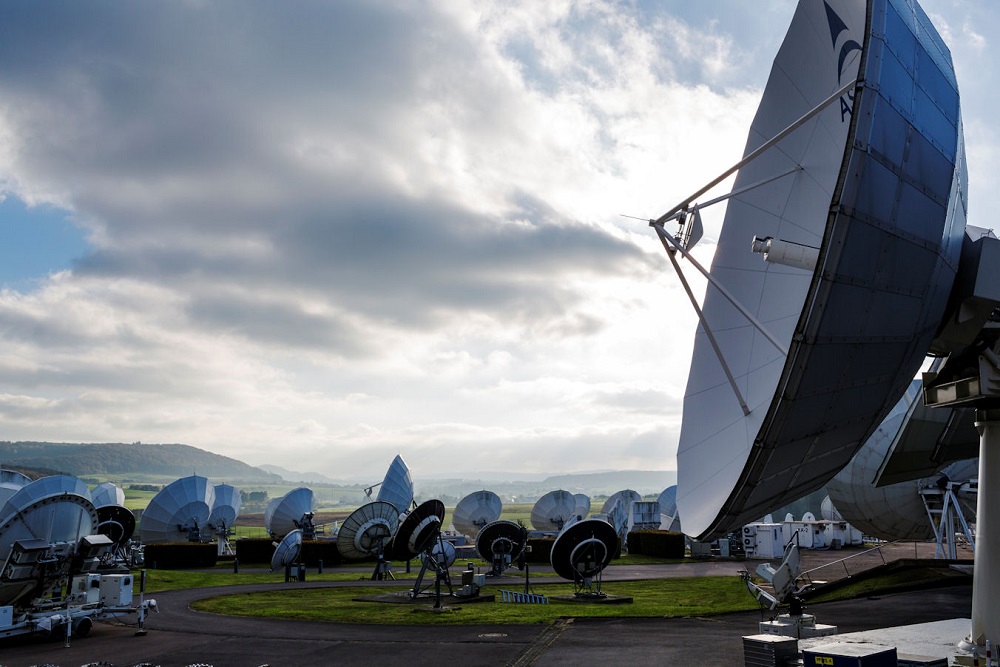Combatting satellite interference: prevention, coordination and technology
No matter how fantastic technology is and how much it facilitates our daily life, it can be equally frustrating for end users when it is failing. The same goes for satellite connectivity. That is why when signals are being disrupted, it is upmost priority for SES to resolve it right away. Chris Grogan, Senior Vice President, Customer Services at SES, tells us more about SES’s initiatives to effectively prevent interference.

Let’s start with the example of the FIFA World Cup 2010. The jamming issue that took place during this event put the Middle East in the spotlight. How has the interference issue changed since then?
The vast majority of all satellites services provided by SES enjoy an unrivalled level of performance and availability. Where cases of interferences occur, we are usually able to restore the satellite services quickly and efficiently.
Most interference events are self-inflicted and are the result of some basic operational errors, such as incorrectly configured or misaligned terminals, faulty station equipment or poor system installations. In such cases, they are handled by our highly-skilled and professional operations teams who manage and monitor our fleet 24/7.
Although infrequent, jamming incidents tend to be high profile and can receive a disproportionate amount of attention. Jamming events are usually specifically targeted and can be state sponsored which adds some layers of complexity, making it more challenging for operators to resolve using traditional methods.
In your view, how does the Middle East region compare to others regarding the interference problem?
The interference environment across any particular region is dependent on a number of factors, such as the complexity of the satellite, the number of users being supported and the applications being delivered (broadcast neighbourhoods are fundamentally different to those supporting data services). The number of interference events we experience in the Middle East is typical for a region where satellite is widely adopted to serve multiple market segments supporting a variety of applications.
In general, would you say that the interference situation has got better, and if so, what are these improvements attributed?
Yes, due to better systems, better collaboration and better processes. For intentional interference events, escalation to the relevant administrations is better coordinated and consequently the ITU are engaged at an earlier stage. That said, we continue to work together across the industry to develop more effective processes to improve our response to combat this type of satellite interference.
What can the industry do to lessen satellite interference?
Satellite operators themselves have the primary responsibility to ensure they protect the integrity of the RF environment as clean spectrum is the resource which supports all of our business. Much more can be done to build upon collaborative initiatives such as the Space Data Association whereby operators can effectively share data critical to maintain the integrity of the space environment and RF spectrum. Beyond this, much more focus needs to be placed into preventative measures, such as system approval processes and also in training and awareness which continues to be a key element in interference mitigation. SES regularly supports and organises training campaigns for technicians who have to install VSAT systems, most recently across Africa and Asia.
What is your view on Carrier ID (CID)? Do you think it is the solution for the interference problem?
Carrier ID is not a de facto solution for "the interference problem" but should prove to be a very effective tool in reducing the impact of some interference events.
Equipment manufacturers have been fully supportive in creating a technology that works well, and as users begin to adopt we should see an improvement in response times to interference events that are caused by customers operating in the OU/SNG, broadcast and enterprise segments where SCPC/MCPC technologies generally prevail. However, not all users can or will adopt as Carrier ID does not address the VSAT MF-TDMA market, for example where communities of many hundreds or thousands of terminals can co-exist in relatively small segments of bandwidth.
For many satellite operators, this community is statistically the source of most of the interference events that we catalogue and can be the most difficult and time consuming to deal with. This is why SES is investing considerable efforts in the development of a Carrier-ID like system for MF-TDMA networks, namely SatGuard, which allows for the identification of terminals causing cross-polar or adjacent satellite interference.
SES fully supports the implementation of CID as an effective method of combatting the effects of interference. We are encouraging our customers to adopt the technology as soon as they can (new projects, replacement lifecycles etc). On the other hand, SES is implementing a phased approach of adding CID to all our uplinks hosted from SES teleports, as well as investing in equipment at our monitoring sites across the world to be able to detect and decode these transmissions.
The above interview was first featured in Via Satellite on: http://interactive.satellitetoday.com/stepping-up-the-combative-strategy
